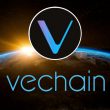Blockchain technology has ushered in a new paradigm in not just finance, but in broader civilization progress. The idea of owning a fraction, or a part of an asset was an unlikely idea a few years ago. However, with the onset of new innovation, the concept is taking shape as a popular investment vehicle today.
Many are aware of the underlying meaning of blockchain, distributed ledgers, and crypto. But tokenization might be something not many are familiar with. It may have implications for every asset class in the world of finance. Hence, let’s discuss what Tokenization is, and how blockchain brings liquidity to illiquid assets.
What is Tokenization?
Tokenization is the process of dividing traditional assets into digital tokens that can be traded on a blockchain. This facilitates investment in and trading of such assets and contributes to the development of a more liquid market. To put it simply, tokenization is the act of transferring asset ownership rights onto a blockchain as digital tokens.
Users can apply tokenization to tangible assets like precious metals, real estate, art, etc., and also intangible assets such as intellectual property. Moreover, it can also include financial vehicles such as bonds and equities.
Investors are able to directly own a portion of the underlying real-world asset in this manner without having to buy or manage the full underlying asset.
Tokenization can aid in increasing the liquidity and accessibility of investing in specific assets. Investors can purchase tokens that represent a fraction of the asset rather than the complete thing. People can invest more easily as a result, and it also contributes to the market becoming more liquid.
Benefits of Being on the Blockchain
Tokenization could very well change the way people invest and do business.
The industry can have a higher level of transparency because of the usage of blockchain technology. The decentralized ledger on which the data is kept makes every transaction on the network transparent. It is impossible to alter, modify, or cancel completed transactions, making the system more dependable and secure. By increasing transparency, the market is strengthened and fraudulent conduct is decreased.
By removing present restrictions on the fractionalization of real-world assets, tokenization enables participation from a larger investor base. Hence, entry barriers are eliminated because resources that were previously only accessible to a select and privileged few can now be accessed by a greater number of people. This improved access contributes to the democratization of the market and the leveling of the playing field.
Moreover, public blockchains’ worldwide reach makes it easier to tokenize assets, making them accessible to investors anywhere. This facilitates the bridging of global markets and the removal of geographic barriers.
Giant financial institutions are also looking into tokenization of their funds for greater participation. KKR recently decided to put part of its private equity fund onto Avalanche’s public blockchain.





